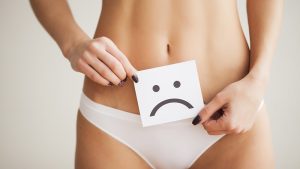Articles / Migraine tips and traps

0 hours
These are activities that expand general practice knowledge, skills and attitudes, related to your scope of practice.
0.5 hours
These are activities that require reflection on feedback about your work.
0 hours
These are activities that use your work data to ensure quality results.
These are activities that expand general practice knowledge, skills and attitudes, related to your scope of practice.
These are activities that require reflection on feedback about your work.
These are activities that use your work data to ensure quality results.
Sydney-based neurologist and immediate past president of the Australian and New Zealand Headache Society Dr Bronwyn Jenkins says some patients may be slipping through the cracks as various myths about migraines persist.
She runs through some common mistakes that patients, and sometimes health professionals make, when it comes to diagnosing and treating migraines.
Trap 1: Blaming migraines purely on psychological distress
While people who get migraines often experience distress, psychological distress is not the single cause of migraines, Dr Jenkins explains.
“So, 70% of patients in a local study were fearful of the next attack and we’ve now got a term for this. It’s ‘interictal burden’ because they’re so worried about how the next attack is going to affect them, particularly if they have frequent attacks,” Dr Jenkins says.
Not surprisingly though, severe and frequent attacks that impact on ability to work or perform day-to-day activities, do cause stress and anxiety.
Dr Jenkins says CBT, mindfulness or relaxation techniques can be useful for self-management.
Trap 2: Missing the right questions to differentiate headache
With new treatments for chronic migraine, it is increasingly important to not miss a diagnosis of chronic migraine. While many people think chronic migraine is defined by the number of years they’ve had them for, it’s actually the frequency that determines this. Technically, chronic migraines are headaches that affect people for 15 days a month, Dr Jenkins says. This is important because the treatment approach for episodic migraine is quite different than for chronic migraine.
Similarly, patients may say they have cluster headache, when it’s really migraine disorder. If headache symptoms persist for 4 to 72 hours, that is most often a migraine.
“Cluster headaches are a really distinct headache disorder that no one should miss. There may be unilateral associated features such as tearing of the eye, redness, drooping, stuffiness of the nose, ringing or decreased hearing, on that side of the head pain. The head pain is always on that side and they can be agitated rather than resting at their worst,” Dr Jenkins says.
“You’ve probably got to dig a little bit more if someone tells you they’ve got cluster headache, because they may be just thinking it is “clustering” as two to three days of migraine, which is the natural history of migraine rather than a cluster attack.”
Trap 3: What is medication overuse?
‘Rebound headaches’ are now referred to as ‘medication overuse headache’—and may be a bit of a misnomer since this group are often suffering and overall under-treating the migraine attacks that they have. Ultimately this group often have too many migraine and so end up taking too many analgesics. It is helpful to be non-judgemental and empathic in any discussion to help recognise and overcome medication overuse headache.
Again, Dr Jenkins says if there are more than 15 days of headaches they should be classed as chronic migraine and treated as such, rather than sending the patient home with advice on managing tension headaches. Even patients with more than three significant migraine attacks a month may benefit from starting migraine preventive treatment to help reduce them.
Trap 4: Missing migraine because classic symptoms such as vomiting or aura aren’t present
Dr Jenkins says we’re often waiting to hear that the patient has aura, is lying in a dark room unable to move with a throbbing head, and even vomiting, but she says we “don’t need to wait for them to be vomiting in a bucket before you allow yourself to call this migraine because it doesn’t need to have the full hand of symptoms each attack. It can be any moderate or more intense type of headache with some, but not all, of the associated features some of the time.”
“I make sure my patients also describe what I call their background headaches. If you just ask about the worst “showstopper” headaches, they often tell you they’ve got three to five a month, but they actually might have three to five terrible bedridden ones, but also multiple moderate headaches that they could just push on with and even other tension type headaches they could do strenuous activity with… it doesn’t mean these aren’t part of their migraine disorder. That’s just what chronic migraine starts to look like once they get more and more headache days over time.”
Favourite tips for management
Dr Jenkins recommends keeping a headache diary, especially for those who get them around their periods or with frequent headache. She encourages patients to write all their headaches down, even the mild ones, as they build a pattern—and it can be individually helpful to track potential triggers such as sleep, stress, certain drinks or food. Staying hydrated can be important, especially if the person tends to get migraines when they exercise. Those who have a reliable trigger, such as exercise or sex, can take a simple analgesic before starting, as long as it is not too frequent an activity.
Once a migraine has started, Dr Jenkins says acute treatments such as a triptan can be less effective, but it’s still worth trying. “There’s no point lying in bed feeling progressively sicker and missing work without trying their best medication. The triptan medications are disease specific and the best currently available treatment in Australia to stop the migraine within 1-2 hours. If there was one thing to tell patients about their acute treatment- I would tell them to take their most effective medication early.”
Alternative and physical therapies
CBD oil has been touted as a treatment for migraines, but Dr Jenkins says there is no evidence for it’s use in migraine disorder and probably requires CBD oil that has THC in it. Unfortunately, that means the patient will not be allowed to drive – and that’s a big price to pay.
Another popular remedy was butterbur, but it has its downsides too. Studies may say it effective, but “there is recognised toxicity and isn’t used. So yeah, effective studies but we have to balance this with toxicity- we know as clinicians that just because it’s natural, doesn’t mean it’s necessarily safer.” On the other hand, she says sometimes, especially if there is a deficiency, B2 and magnesium may be helpful for some patients.
Physical therapies can sometimes be useful for people, particularly if they who have neck stiffness and pain between their headache days, but if the patient has had a handful of sessions and found no difference, it may not be the main trigger.
Acupuncture, can also be helpful for some patients, she says. Dr Jenkins says it can be useful for pregnant women who can’t take a lot of other medications, but in her clinical experience it’s probably less effective than medication options like botulinum toxin all the way around the head—however they haven’t been studied head-to-head.
Many women’s symptoms improve in pregnancy, Dr Jenkins adds. “Unfortunately, if they really do need medications, you have to have early conversations ideally before conception to avoid the teratogenic ones.”
She says there are devices too, such as the cefaly device and vagal nerve stimulating devices on the market, but the studies behind them are small.
You can also listen to her discuss more about migraine myths on The Clinical Takeaway podcast here.
Recommended resources:
Based on this educational activity, complete these learning modules to gain additional CPD.

Managing Paediatric Anxiety in General Practice

OSA – Which Test for Which Patient

Musculoskeletal Health in Menopause

AHPRA-Proof Your Practice – Social Media Risks for GPs




Strongly agree
Somewhat agree
Neutral
Somewhat disagree
strongly disagree
Listen to expert interviews.
Click to open in a new tab
Browse the latest articles from Healthed.
Once you confirm you’ve read this article you can complete a Patient Case Review to earn 0.5 hours CPD in the Reviewing Performance (RP) category.
Select ‘Confirm & learn‘ when you have read this article in its entirety and you will be taken to begin your Patient Case Review.
Menopause and MHT
Multiple sclerosis vs antibody disease
Using SGLT2 to reduce cardiovascular death in T2D
Peripheral arterial disease
